

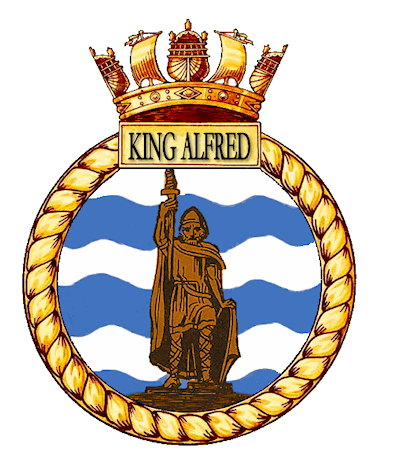
None
A short distance from the Sussex Division RNVR headquarters at 5 Victoria Terrace was a new municipal building nearing completion, the Hove Marina complex. This site was immediately requisitioned by the Admiralty under the authority of the Naval Mobilisation Act of 1938, which gave priority to the commandeering of unoccupied property for military use. The Marina was to have been Hove's new municipal Swimming Baths and recreation Complex, due to be partially open to the public by September 1939. Instead the Marina opened its doors for the first time as a commissioned ship in the Royal Navy, becoming HMS KING ALFRED on September 11th under the command of Captain John Noel Pelly CBE, RN (Ret).
KING ALFRED was the ninth century King of Wessex, and he is considered to be the 'father' of the British Navy as the first monarch to utilise ships in defence of the realm. The new establishment which bore his name was to 'father' a new kind of naval officer to swell the ranks of Britain's soon to be rapidly expanding navy. These were HO (Hostilities Only) officers commissioned into the RNVR as temporary appointments; they were to be released from service on the cessation of hostilities. By the end of WW2 RNVR officers accounted for over 80% of the officers on active service with the Royal Navy.
Training was to commence at Hove almost immediately, the first batch of trainees was due to arrive one week later. Captain Pelly and his small staff set about organizing the Marina's facilities into a training school, preparing a syllabus and to find suitable billets for staff and trainees in short order. Many local hotels and private houses were pressed into service as accommodation billets for staff and trainees, these included Langfords Hotel in Third Avenue, and the Lawns Hotel on the Kingsway The RNVR depot helped considerably; it was to be October before all its personnel had been mobilized so RNVR ratings were employed clearing builder's rubble and converting various rooms into classrooms, offices, and an officer's mess. These working parties were under the supervision of Commander F. P. Frai RNVR, until a week ago himself a member of the Sussex Division staff but now appointed to KING ALFRED as an instructor Officer.
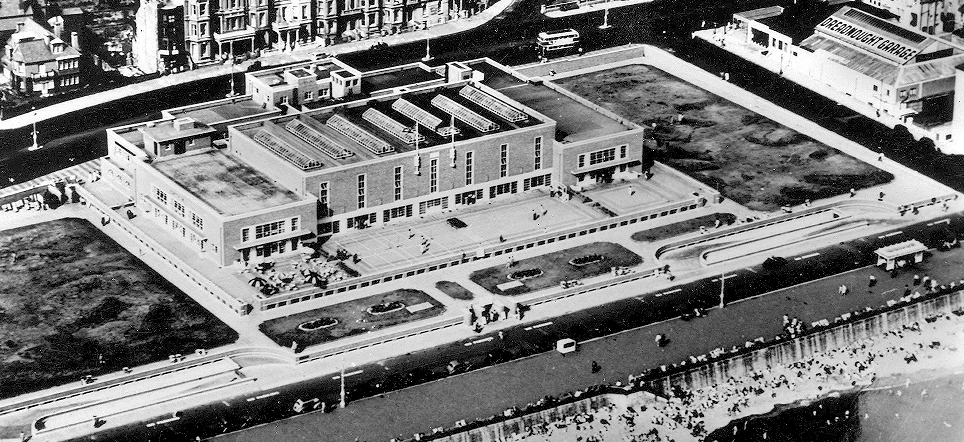
Along the front of the Marina building facing the Kingsway were a number of small rooms which were intended to house individual baths, these were converted into offices; classroom space was provided by the dressing rooms adjoining the pools. A smaller, cleansing pool was allocated for the use of the ship's chaplain, and by 1940 this room had been converted into St Nicholas' Naval chapel.
The initial batch of 140 men reported to KING ALFRED in late September 1939, a mixture of Supplementary reservists and direct entry recruits. The Royal Naval Volunteer (Supplementary) Reserve was a force of 2,000 yachtsmen and other experienced amateur or retired professional seamen over the age of 25 established in 1936 as a ready reserve of suitable men to become naval officers in times of emergency. The majority of the RNV(S)R were mature, experienced sailors who were fast tracked through KING ALFRED and had an average stay of 10 days before they were granted commissions. For less experienced members of the RNV(S)R the standard training period was 3 months.
The first four classes of 'Officers under training' began instruction in early October, each class comprising of thirty men; two classes of midshipmen and two of sub-lieutenants. Rank was determined by age - those under 19½ became a midshipmen, those over 19'/2 a sub-lieutenant. Upon receiving their commission, the new officers received their badges of rank, midshipmen wore a maroon lapel flash while sub-lieutenants wore a single 'wavy' gold stripe on their jacket cuffs. The officers and men of the RNVR were affectionately termed as 'the wavy navy' on account of the officer's wavy gold stripe and the early RNVR ratings wavy white edging on their seamen's jersey collar - both were straight on regular forces uniforms.
Once the men of the RNV(S)R had been processed and left to join the fleet KING ALFRED began to train men from various other sources; direct entrant officers, CW Officer Candidates and men selected through the 'Y' Scheme. Direct entrants were 'mature' gentleman aged around thirty who joined as 'officers under training', receiving their commissions on call up. CW (Commission and Warrant) scheme candidates were specially selected men from the lower deck, serving ratings with a minimum of 3 months' sea experience assessed as having officer potential by their commanding officers. The 'Y' scheme recruited educationally qualified (School Certificate holders or better) young men whilst still at school and were 'potential officer material'. Upon call up they completed basic new entrant training as naval ratings before joining KING ALFRED.
CW and 'Y' scheme cadet ratings comprised the majority of the trainees to pass through HMS KING ALFRED; they were not afforded the title 'officers under training' until the final two weeks of the 12-week course.
In early 1940 additional sites were requisitioned to provide for a three-tier training structure; Mowden School (the Droveway, Hove) had been evacuated to Oxendon Hall, Market Harborough, Northamptonshire, by 1940 and the site was requisitioned as ‘KING ALFRED II'. Lancing College, evacuated to Ludlow in Shropshire in the summer of 1940, was also requisitioned at the end of 1940. With the addition of Lancing College, the various elements of KING ALFRED became identified by a location letter instead of the usual suffix ‘II’ or ‘III’; the main headquarters site in Hove was referred to as both KING ALFRED and KING ALFRED (H), Lancing as ‘KING ALFRED (L), and Mowden KING ALFRED (M).
Under the training programme the officer cadets passed through each of the three KING ALFRED training sites in turn; beginning with a two-week initial training and evaluation period at Mowden School then on to six weeks at Lancing College where advanced subjects were taught, including communications, seamanship and navigation skills. The final stage of training was at KING ALFRED (H) where the course was to be completed.
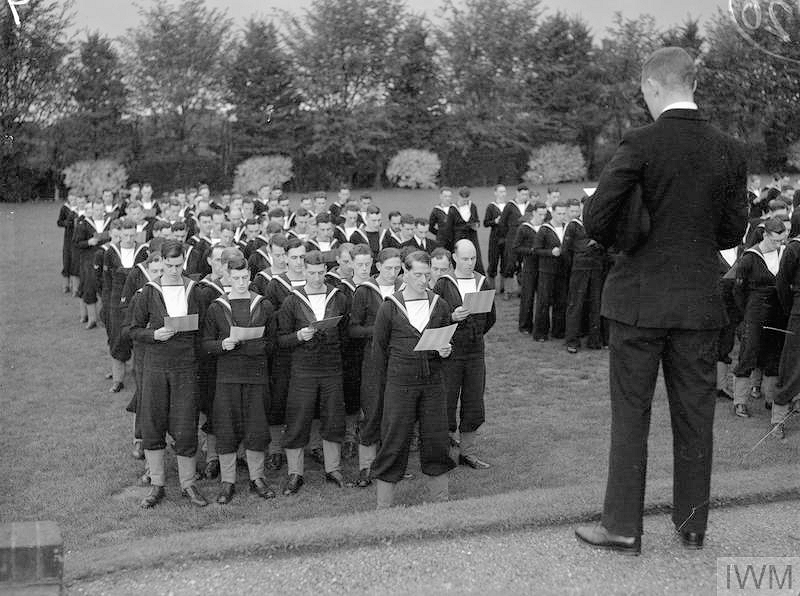

This site was initially an annex for the main site as the numbers of men arriving increased as demand for new officers grew. It was commissioned as KING ALFRED II and was under the charge of Commander J. de C. Richards (ret) as Commander-in-Charge. From July 1941 Mowden became the reception centre for all CW candidates; the first batch of cadet ratings arriving on the 8th. There was no accommodation at Mowden, cadet ratings were billeted in small hotels and private homes in the local area. In October 1941, it became the new home of the Admiralty Selection Boards 9 and 9a, headed by Rear-Admiral R. C. Davenport and Rear-Admiral E. B. Cloete. These boards had previously held at the RN Barracks. Portsmouth until heavy bombing necessitated its relocation. CW candidates were screened by the board, successful ratings progressing to Lancing College to begin their officer training.
Telegraphist Derric Breen remembers arriving at Mowden in May 1942
Upon arrival ratings underwent a medical before attending the Admiralty Selection Board which operated from the school library. Officer Candidates arrived at KING ALFRED wearing their seaman’s ‘square rig’ uniform, Ratings who passed the Board were issued with two white cap bands to be worn in place of the normal ‘HMS’ cap tally and were known by the title ‘cadet rating’.
A playing field served as the parade ground with a mast erected from which the White Ensign and various signal flags were flown; morning divisions were held here in all weathers.
One major problem facing Cadet Ratings was that of achieving and maintaining a high level of ‘OLQs’ (officer like qualities), the qualities and behaviour expected of an officer and a gentleman which they must master in order to reach their final board at Hove. Any displays of LDA (lower deck attitude) could result in a candidate being failed and returned to his unit at any point in the course.
Naval personnel are organised into structures called Divisions, named for famous naval figures, such as Anson, Benbow, Cochrane, Drake, Effingham, Frobisher, Grenville, Hawke, Jellicoe, Nelson and Rodney. Cadet ratings were assigned to a Division at Mowden and remained with their division throughout his time at KING ALFRED. Each division was under the charge of a Divisional Officer who was directly responsible for the progress of cadets under his charge. Under him were a Field Training Officer (FTO), an Instructor Officer and a Seamanship Officer. Cadet ratings stayed at Mowden for 2 weeks, before moving with their Division to the next stage of the course. From January 1941 this was at Lancing College.
Training commenced at Lancing from mid-January 1941, under the care of Commander Hugh MacLean, Officer in Charge of KING ALFRED (L). The Cadet ratings were accommodated at the College during the 6 weeks of this phase of their course, living in large communal dormitories.
Morning Divisions at Lancing were held in the Tower Quad. This is not a very large space so as the numbers of trainees increased as the war progressed morning divisions became more cramped, and eventually had to be held in ‘shifts’. The first Division of Cadet ratings to pass out from ‘KING ALFRED (L)’ did so on February 27th at a parade witnessed by Rear-Admiral Harrison.
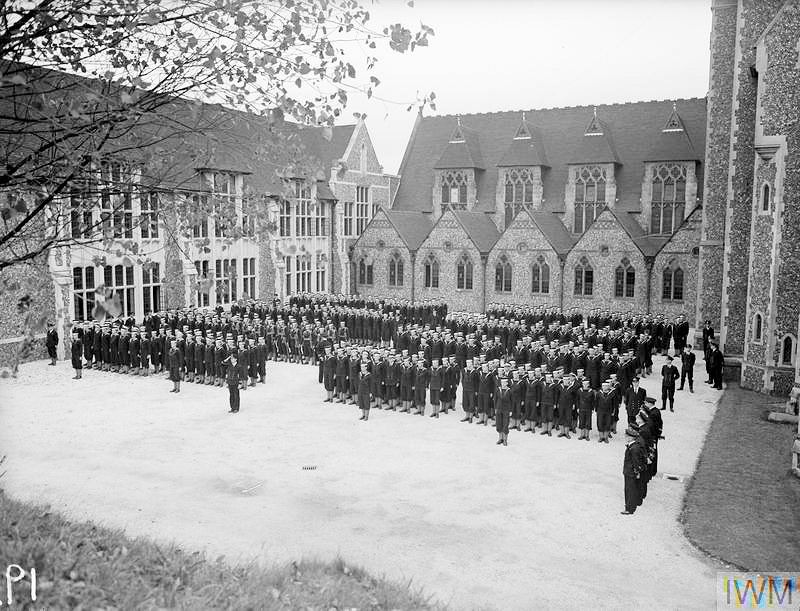
On May 29th 1941 His Majesty King George VI visited HMS KING ALFRED, and is known to have inspected the Lancing and Hove Marina sites. While at Lancing he inspected several Divisions of Cadet Ratings on the Tower Quad.
In August 1942 HMS KING ALFRED (L) provide at staging point for Canadian troops participating in operation ‘Jubilee’ the ill-fated allied raid on the port of Dieppe. Final planning for the operation was carried out at Lancing College, by the Canadian Army and Royal Navy commanders. Canadian troops of the Les Fusiliers Mont-Royal, 6th Infantry Brigade assembled at Lancing mustering on the Tower Quad for a final inspection in the early hours of August 19th before departing to embark in Landing craft from the beaches below Lancing [See HMS Lizard for more detail].
Navigation was a major part of the Cadet Ratings training at Lancing; it was so important that it became the ‘make-or-break’ element of the course in later years. Navigation training employed a technique and technology used by the Fleet Air Arm to train Air Direction Officers in the use of vectors – the Wall’s Ice-cream tricycle. The principles were the same in both cases; the trainee had to peddle around a set course following bearings using a compass mounted on the box at the front of the machine. Lancing trainees had to obey the ‘rules of the road’ of seamanship and be conversant in signalling using flags which they attached to a small mast on the front. The cricket pitch was used for this activity.
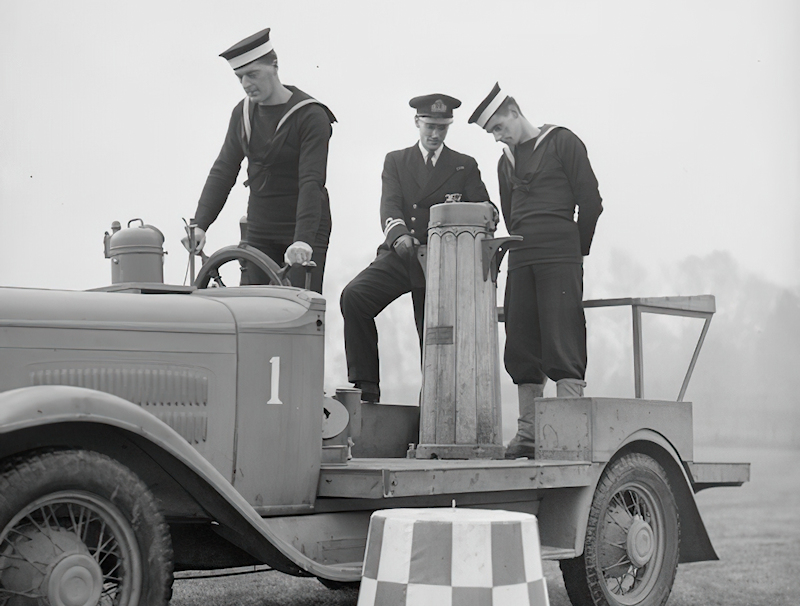
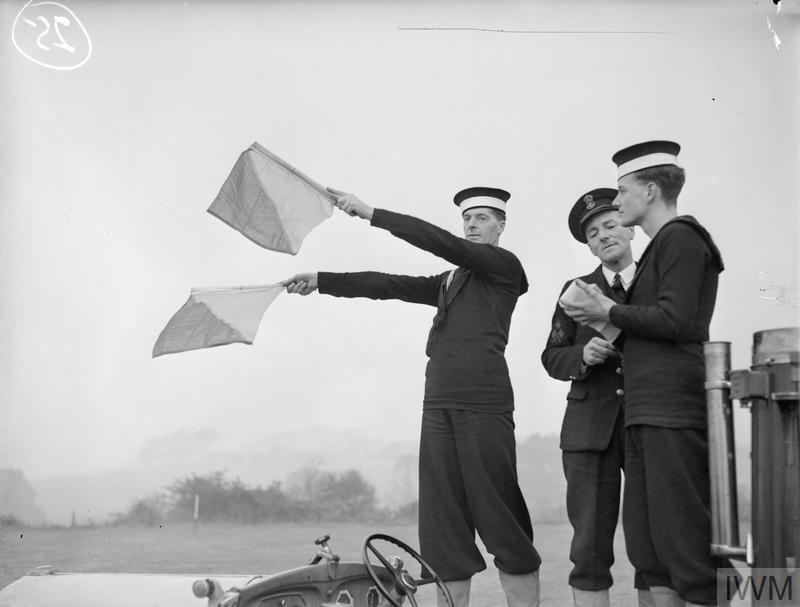
At the completion of their six weeks at Lancing the entire division transferred to the main site at Hove for the final stage of their training.
The final four weeks of training were done in the main building, the RNVR Drill hall and Shoreham harbour. Accommodation for those who were unlucky enough to be billeted ‘on board’ (mostly Cadet Ratings) was the dormitories in the converted underground car park. Direct entry officers were billeted ‘ashore’ in hotels and private houses. The Mess, which was also in the car park, was used by Cadet Ratings as well as Officers under training from mid-1940; the area was divided in two, the direct entry officers' part being roped off.
The area around the establishment had attracted a number of naval outfitters and at least five were opened a stone’s throw from the main entrance. Having achieved the required marks to complete the course the last major hurdle for the Cadet Rating was the Final Board; Cadets that failed their final board were not expected to pay for the new uniform which was already on order. Commissions were handed out at a final parade attended by a senior officer, usually and Admiral.
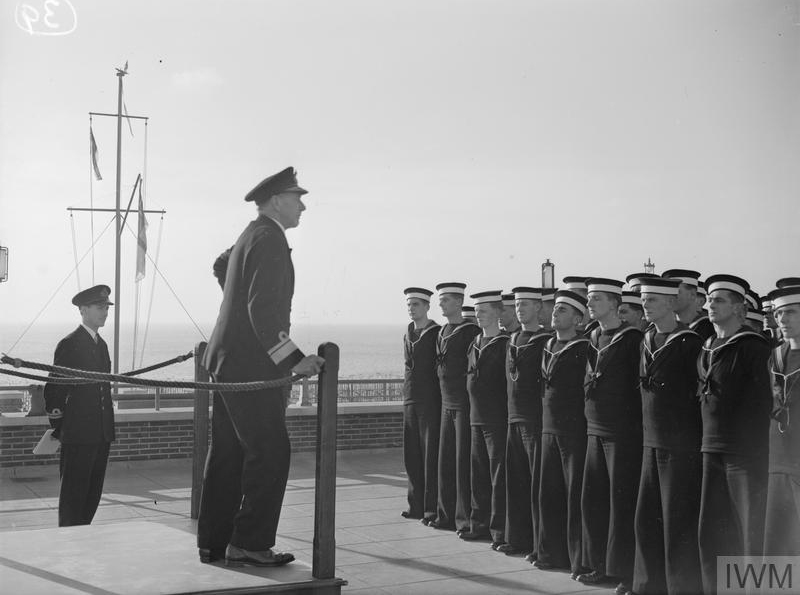
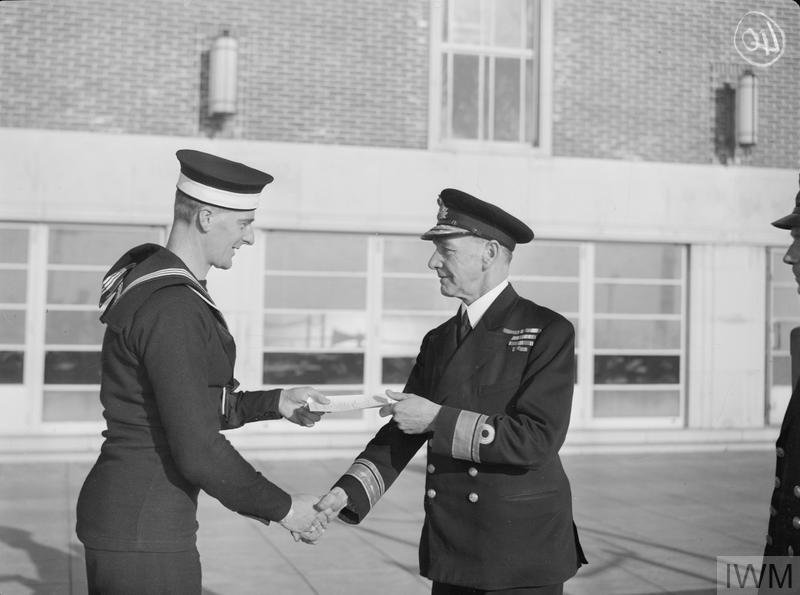
© 1999-2025 The Royal Navy Research Archive All Rights Reserved Terms of use Powered byW3.CSS
Comments (2)
Incredibly informative - I am researching my late father's war service - the pieces of the puzzle are falling into place
Many thanks
Daughter of J.C.Sandford JX.247125